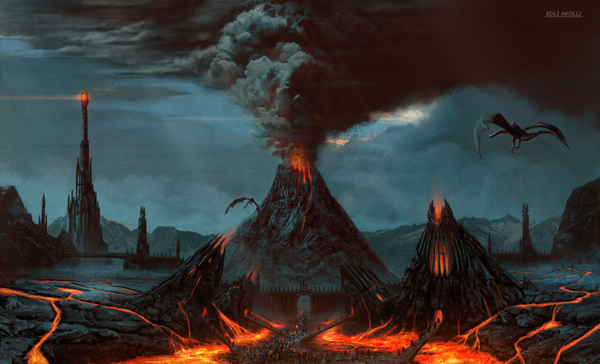WWI Battle of the Somme: How J.R.R. Tolkien Found Mordor on the Western Front by Joseph Loconte, New York Times


In the summer of 1916, a young Oxford academic embarked for France as a second lieutenant in the British Expeditionary Force. The Great War, as World War I was known, was only half-done, but already its industrial carnage had no parallel in European history.
“Junior officers were being killed off, a dozen a minute,” recalled J. R. R. Tolkien. “Parting from my wife,” he wrote, doubting that he would survive the trenches, “was like a death.”
The 24-year-old Tolkien arrived in time to take part in the Battle of the Somme, a campaign intended to break the stalemate between the Allies and Central Powers. It did not.
The first day of the battle, July 1, produced a frenzy of bloodletting. Unaware that its artillery had failed to obliterate the German dugouts, the British Army rushed to slaughter.
Before nightfall, 19,240 British soldiers — Prime Minister David Lloyd George called them “the choicest and best of our young manhood” — lay dead. That day, 100 years ago, remains the most lethal in Britain’s military history.
Though the debt is largely overlooked, Tolkien’s supreme literary achievement, “The Lord of the Rings,” owes a great deal to his experience at the Somme. Reaching the front shortly after the offensive began, Tolkien served for four months as a battalion signals officer with the 11th Lancashire Fusiliers in the Picardy region of France.
Using telephones, flares, signal lights, pigeons and runners, he maintained communications between the army staff directing the battles from the rear and the officers in the field. According to the British historian Martin Gilbert, who interviewed Tolkien decades later about his combat experience, he came under intense enemy fire. He had heard “the fearful cries of men who had been hit,” Gilbert wrote. “Tolkien and his signalers were always vulnerable.”
Tolkien’s creative mind found an outlet. He began writing the first drafts of his mythology about Middle-earth, as he recalled, “by candle light in bell-tents, even some down in dugouts under shell fire.” In 1917, recuperating from trench fever, Tolkien composed a series of tales involving “gnomes,” dwarves and orcs engaged in a great struggle for his imaginary realm…
